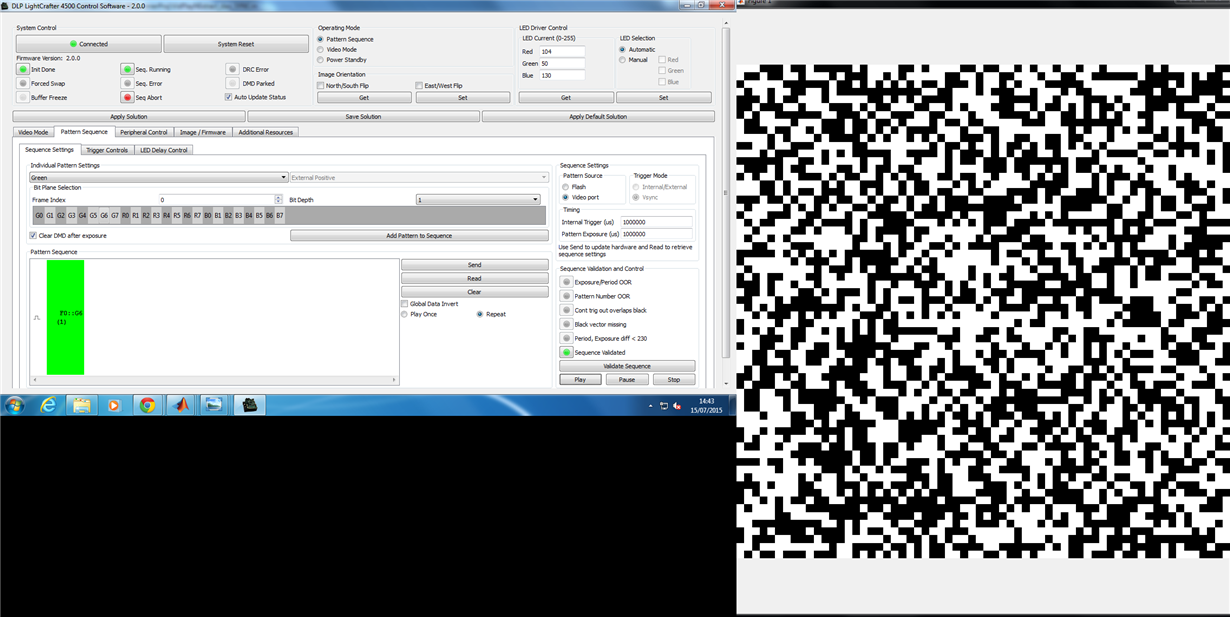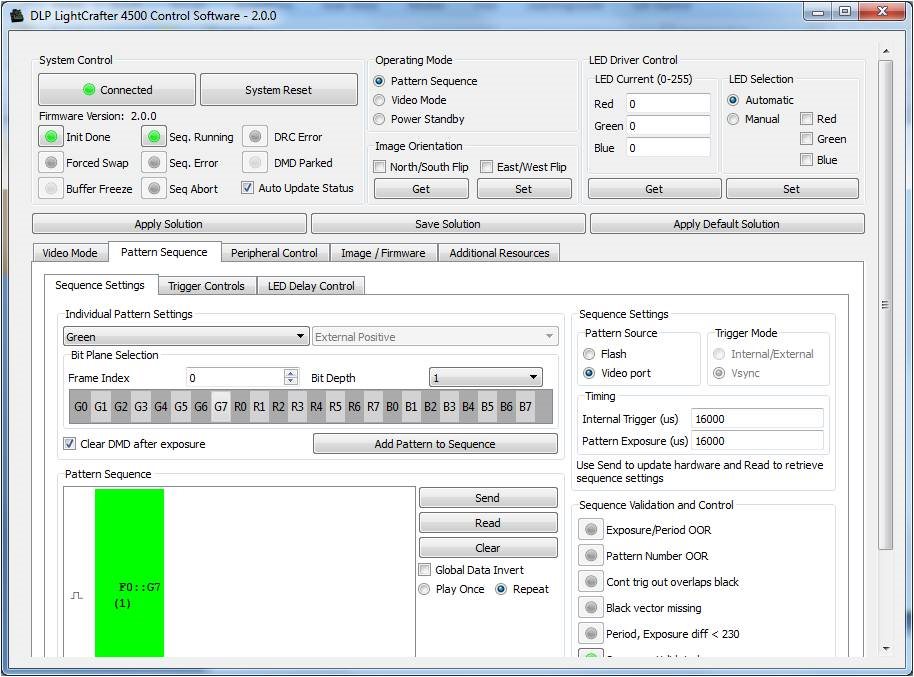On using a photodiode detector to observe the output light intensity reflected from a screen illuminated by the DLP. there is a periodic (sinusoidal/sawtooth in appearance) ~15Hz oscillation of the detected intensity. This oscillation was observed for the Red, Green and Blue LEDs separately. The source of the oscillation is definitely the DLP, and not the detector or its power supply.
Is this normal/expected? It would be ideal to have a constant intensity if possible.
Thanks,
Joe Swartzentruber








